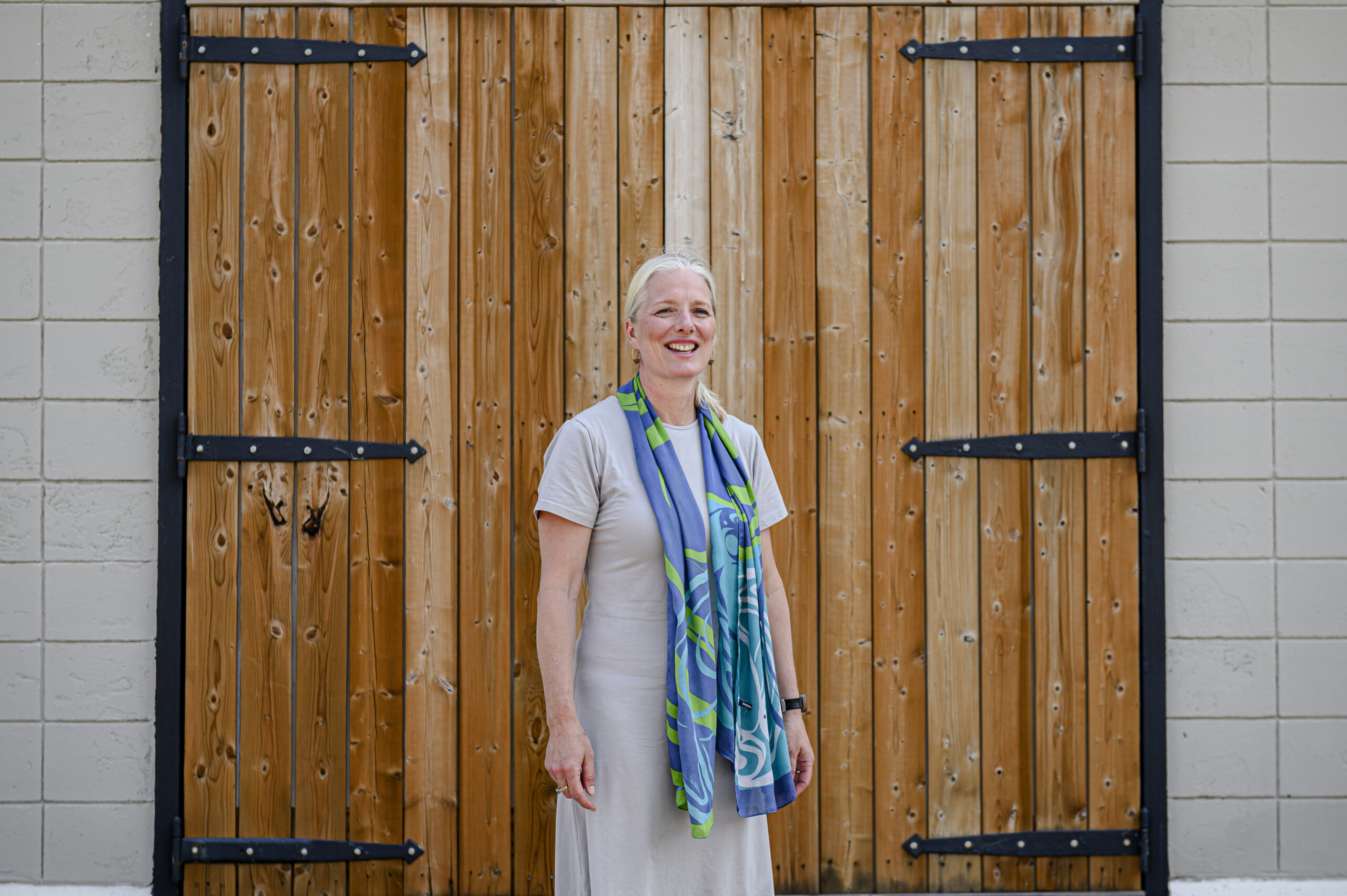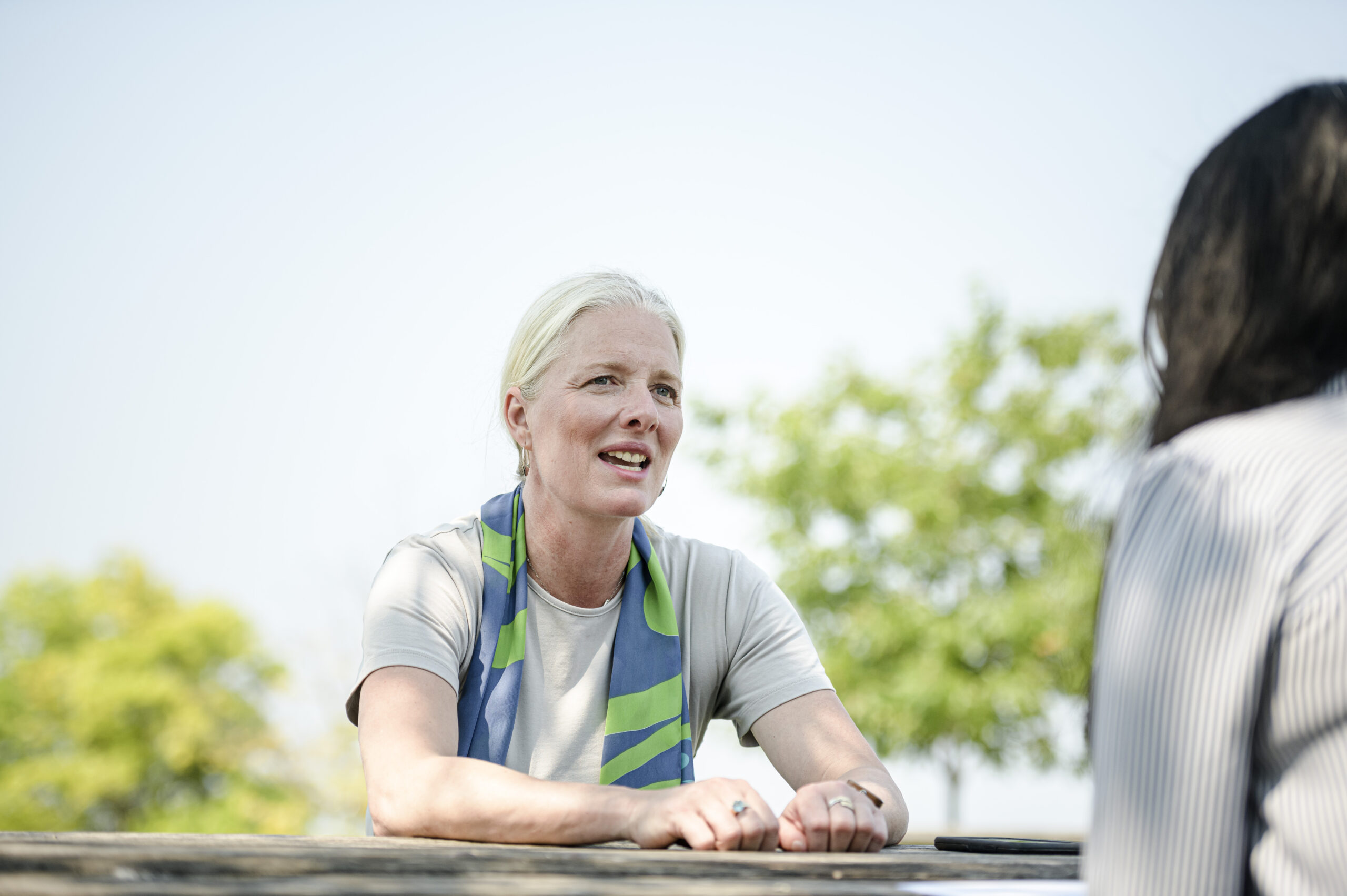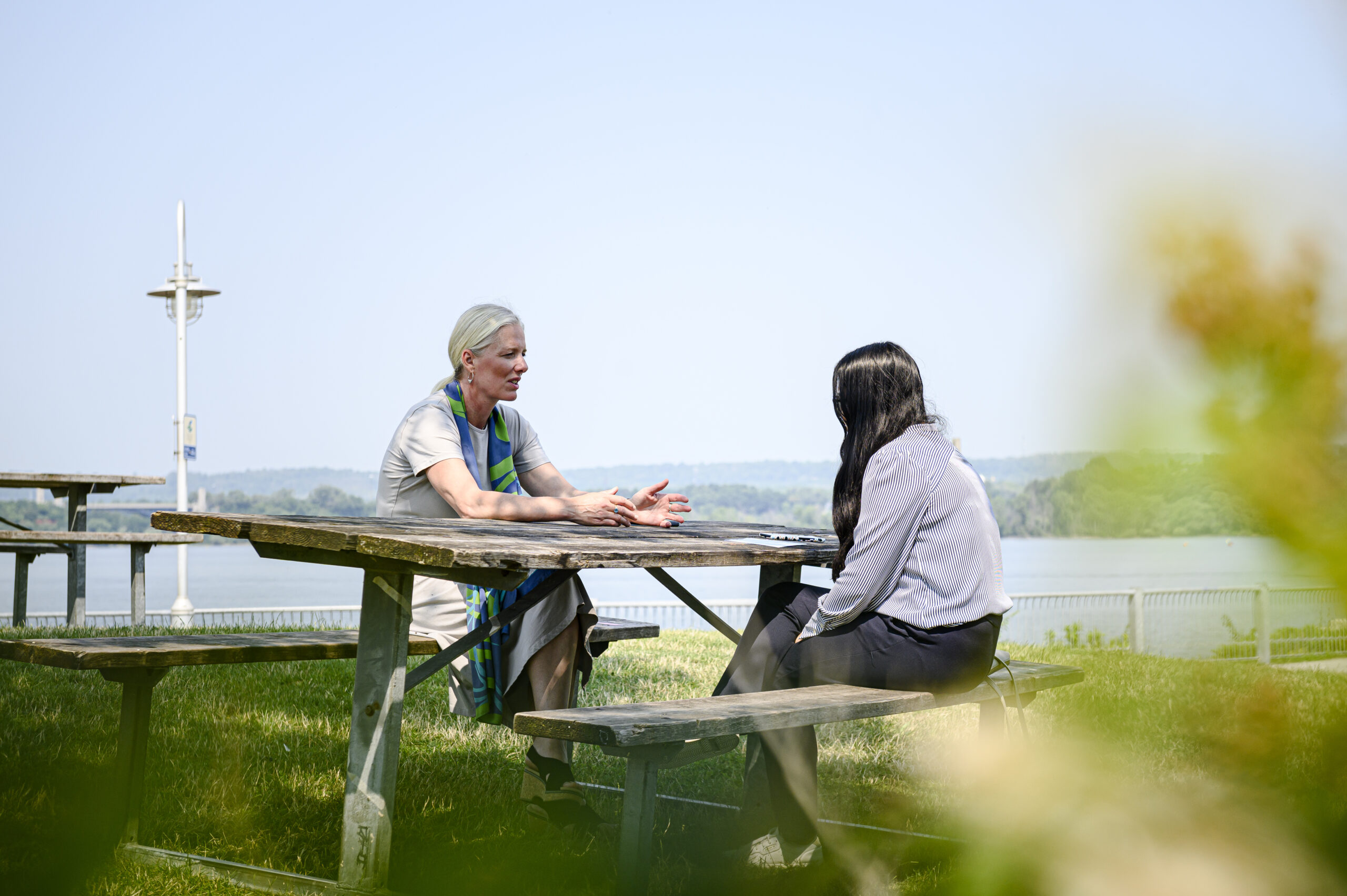
‘Afraid of the water’? Life in a city that dumps billions of litres of raw sewage into lakes and rivers
10 billion litres of sewage are dumped into Winnipeg’s lakes and rivers each year. Some...
Catherine McKenna’s most memorable moment as environment minister happened in August 2019 during a visit to the Northwest Territories — more than 2,840 kilometres away from Ottawa.
It was August 2019 and McKenna was touring the newly announced Thaidene Nëné National Park, 14,000 square kilometres of wilderness that would be protected in partnership between the Government of Canada, the Łutsël K’e Dene First Nation, the Northwest Territory Métis Nation and the Deninu K’ue First Nation.
The group camped on the land and went swimming in the freezing water. At night, they sat around the campfire and McKenna heard the Indigenous leaders speak about what the land meant to them. When they woke up early the next morning, McKenna watched an eagle in the sky. Later, she found an eagle feather near her. Her companions told her it was a sign: the park was meant to be.
“I remember thinking: if only we could get every Canadian out on the land with the Indigenous people, and maybe they’ll care and understand why this was all so important,” she told The Narwhal through tears. “I felt like the luckiest person to do that job. I grew up in the Hammer [Hamilton, Ont.] and got to be in one of the most crucial portfolios and visit this land. And, I got to do it my way. I stayed true to myself and I left when I felt it was time to leave.”
McKenna shared this memory in an exit interview with The Narwhal, sitting in a waterfront park in her hometown, where she is enjoying a mini-break with her parents and kids after announcing her retirement from politics.
McKenna has been a leading minister in a government for six years as it made precedent-setting decisions such as implementing a national price on pollution, overhauling Canada’s environmental assessment regime and spending billions of taxpayer dollars to buy the Trans Mountain pipeline system and the rights to a proposed expansion project from a company that believed its proposal was too risky. She is departing as the infrastructure minister, a position in which she is leading the country’s first national infrastructure assessment.
The decision to leave politics is rooted in just two things that McKenna says time and again: “My kids and climate change.” She adds: “There’s too little time on both.”
McKenna says she finalized her decision to leave after a conversation with John Kerry, the U.S. climate ambassador, about public and private sector climate financing and other global climate commitments. Two weeks later, she announced her retirement.

“The fact is, climate change is a global issue. There’s obviously a lot more to do in Canada, but the whole world needs to do what Canada has done,” she says. “The whole world needs to have a serious climate plan; they have to have a price on pollution; they have to phase out coal, they have to make investments in public transit and clean energy; they need to do it in partnership with Indigenous peoples; they need to make sure that inclusivity is part of it.”
McKenna suggests that she’ll be adopting more of a global focus in her climate efforts moving forward. There’s a sense that she can’t do much more in government other than help make it better and safer for future female leaders. She repeatedly mentions the blowback she received from conservative premiers throughout her time in politics. She carefully hints her work was limited by the mechanics of federalism.
But she also makes a promise that when it comes to climate change, she’s not going anywhere.
I think we did loads in government, and I think we need new people to come in and continue the legacy. Climate is everything. I feel like I did what I came to do. When I came in, we were a joke internationally. We were trying to roll back everything as opposed to moving forward. We’ve done a lot since then, but I really think there are other ways for me, personally, to work on climate change.
I’m not at all sure what it’s going to be, but COP 26 [the 26th meeting of the Conference of Parties to the United Nations Framework Convention on Climate Change] is really important. I started my political career at COP 21; I was just on the job for a few days. I know a lot of folks there. It needs to be a success and that means support for developing countries. So I’m going to do what I can on climate here but I think there’s a lot of work that needs to be done internationally. And I will certainly be working with the Inuit; they’ve done the least to cause climate change and they are the most impacted. They’re hunters going underwater.
I had become the face [of the climate portfolio] in a negative way, in a way that just focused on the politics with premiers. It became distracting. But I also saw an opportunity in infrastructure because we have to build the future we want. Every single dollar we spend on infrastructure has to be through a climate lens. I’ve totally transformed, I think, the thinking on infrastructure including the Canada Infrastructure Bank being really focused on getting private sector support for clean infrastructure. I’ve also tried to build this idea that you either increase emissions or reduce emissions when you build things. We brought in natural infrastructure; no one really thought about nature as infrastructure.
It was great because now I had money to make these investments. And the pandemic made it even more important to build back better. People realized we have to do a lot better and think about climate and also equity when we’re building.
I think Canadians don’t know what “infrastructure” means because it’s a made-up, terrible, bureaucratic term. I think infrastructure is everything you build for the future you want. A clean future. An inclusive future.
Every dollar has to create jobs and growth, it has to tackle climate change and build resilience and it has to build a more equitable society. The good news about infrastructure is it’s tangible and real. We need a vision for our country and then we have to build it, and every day wake up and make sure we’re reducing emissions.
(Note: the version of Biden’s infrastructure bill passed by the House of Representatives on July 1 is a much slimmed down version of what was originally proposed. The Senate is still debating the proposal.)
There’s a limit to taxpayer dollars — that’s just a fact. And there’s a lot of private sector dollars and the question is how do you get those dollars to build things that are in the public interest. I think this idea is now just hitting its stride. You’ve got to get the right projects. I think we can innovate but other countries are looking at this as a model too. The U.K. is building one. I had a great call with U.S. Secretary [of Transportation] Pete [Buttigieg] about it. We nerded out on how you do big things with focus and purpose.
This isn’t about making massive returns on investments. This is about getting more infrastructure built in the public interest than we would be able to do otherwise by bringing in the private sector.

No one will ever do enough, because the whole point of even the Paris Agreement is that every five years you have to increase your ambition. Time is not on our side. What we’re seeing now, it has to be a wake-up call for everyone, including provinces who have to be part of the solution. That is always a bit of a challenge in Canada, to bring all provinces on side.
When people say: ‘Can’t you do more in Canada to tackle climate change?’ Well the whole world has to [do more], not just Canada. I feel like I’ve left a legacy and a roadmap and everyone now has to grind away.
Look, I try to be a practical person. Some energy companies are very progressive and realize they need to be energy companies, not just oil and gas. Suncor supported a price on pollution, and that was extremely helpful. Others were less helpful — they fought tooth and nail. Sometimes it was acrimonious and I felt I got into these massive fights, including with premiers.
What happened with ExxonMobil is completely unconscionable. I don’t know if those tactics are used here but if they are they should be called out, because the reality is they are playing games with our planet and our future and the future of our kids. I’m hopeful that with our new net-zero legislation we will take some drama out of this and everyone’s just going to have to be held accountable to whether you meet your targets and industry has to be part of it.
I think the world is changing very fast. The shift to clean energy is happening very quickly, faster than when I started this job. I think if [the oil and gas industry] don’t do it, they’re going to be gone like the dinosaurs. The good ones are trying to figure it out and are diversifying. The others have decided to wait it out. They’re not going to win. We have to move to a cleaner future; the risks of not doing that to their own business are enormous. But we have a premier in Alberta who spent a billion dollars on a project we didn’t have any control over, and now that money is gone when it could’ve been used for retraining or clean energy investments.

Maybe I could’ve been more blunt, because I actually try to be polite.
I don’t like vilifying people; I just want people to do the right thing. This is a competition to be clean; it’s a race to the top and I want everyone to be part of it.
The whole price-on-pollution trajectory was hard. I just felt the weight of having to carry a policy that was so important and thinking ‘am I doing everything to explain to Canadians about why it matters? How do I explain to them that this thing that seems a bit abstract is actually important?’
I just remember that one cover of Maclean’s: the resistance. The resistance to what? The resistance to a cleaner future? The resistance to change? The resistance to good jobs? The resistance to what kids want? It was just a bunch of men. It wasn’t always fun. I wish that we could have worked better. I tried really hard to work with every province but they doubled down so we doubled down. I explained to them that they could design this price however they want to. They didn’t buy it; it was just a game.
The only way any policy is totally resilient is if Canadians believe in it, and that’s where I have faith. I remember in every question period being slammed by the Conservative Party on having a price on pollution, and even though I don’t agree with the way they’re doing it, they now have to say you have to have a price on pollution. I feel like that’s progress. That is progress.
This interview has been edited for brevity.
Get the inside scoop on The Narwhal’s environment and climate reporting by signing up for our free newsletter. On a warm September evening nearly 15...
Continue reading
10 billion litres of sewage are dumped into Winnipeg’s lakes and rivers each year. Some...

Court sides with Xatśūll First Nation, temporarily halting Mount Polley mine waste expansion

Break out the champagne: Emma’s storied life and leadership in journalism has earned her the...
